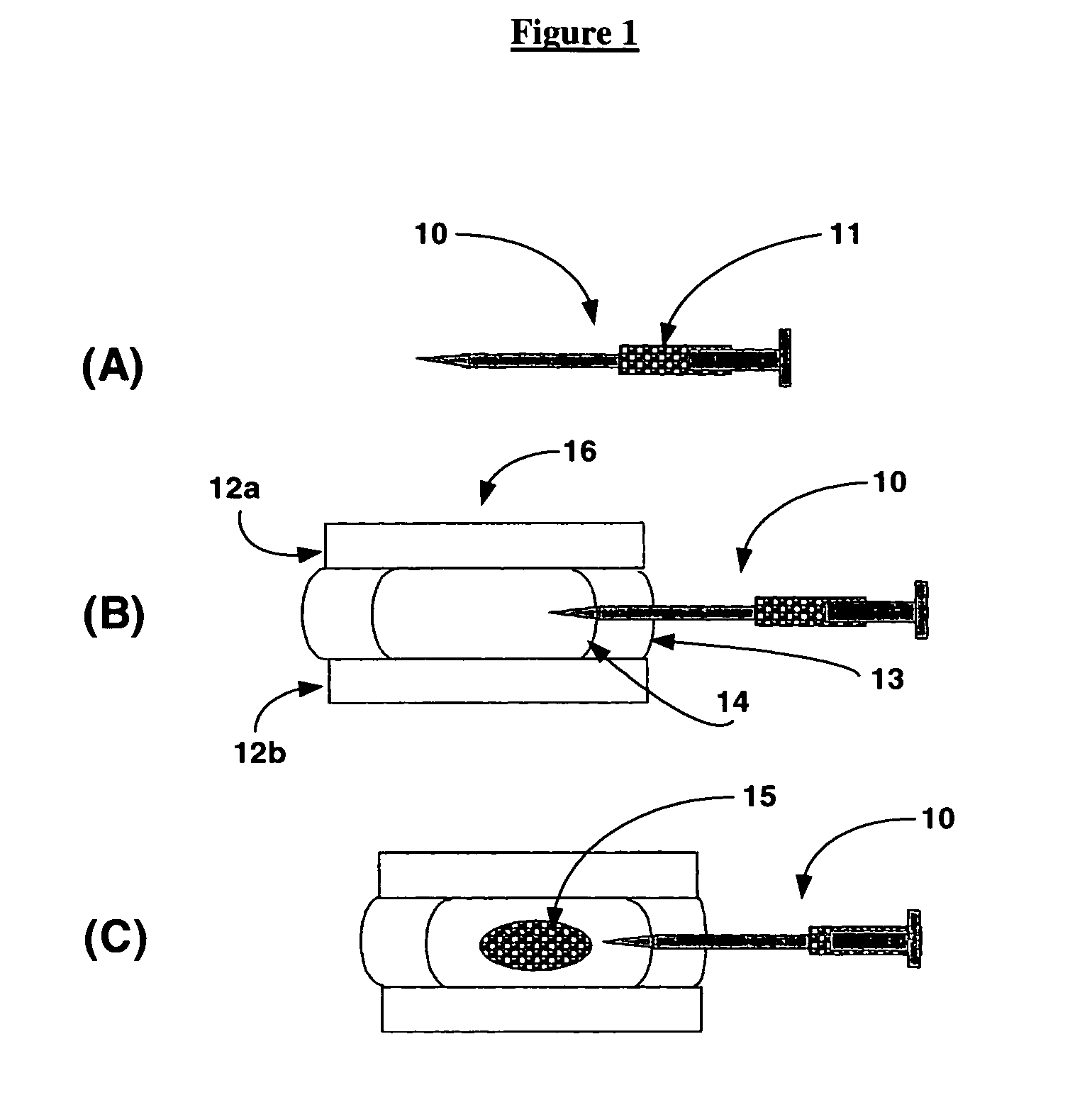Intervertebral disc augmentation and rehydration with superabsorbent polymers
a superabsorbent polymer and intervertebral disc technology, applied in the field of superabsorbent polymer methods, can solve the problems of reducing disc space height, and displaced or damaged intervertebral discs, and achieves the effects of minimally invasive, easy reversibility, and simple treatment method
- Summary
- Abstract
- Description
- Claims
- Application Information
AI Technical Summary
Benefits of technology
Problems solved by technology
Method used
Image
Examples
Embodiment Construction
[0015] The following description is intended to convey a thorough understanding of the various embodiments by providing a number of specific embodiments and details involving treatment of the intervertebral disc space. It is understood, however, that the embodiments are not limited to these specific preferred descriptions and details, which are exemplary only. It is further understood that one possessing ordinary skill in the art, in light of known systems and methods, would appreciate the use of the embodiments for their intended purpose and benefits in any number of alternative embodiments.
[0016] As used herein and in the appended claims, the singular forms “a,”“an,” and “the” include plural reference unless the context clearly dictates otherwise. Thus, for example, a reference to “a superabsorbent polymer” includes a plurality of such polymers, and a reference to “a polyelectrolyte” is a reference to one or more polyelectrolytes, and so forth.
[0017] As used herein, the term “po...
PUM
| Property | Measurement | Unit |
|---|---|---|
| Fraction | aaaaa | aaaaa |
| Fraction | aaaaa | aaaaa |
| Weight | aaaaa | aaaaa |
Abstract
Description
Claims
Application Information
 Login to View More
Login to View More - R&D
- Intellectual Property
- Life Sciences
- Materials
- Tech Scout
- Unparalleled Data Quality
- Higher Quality Content
- 60% Fewer Hallucinations
Browse by: Latest US Patents, China's latest patents, Technical Efficacy Thesaurus, Application Domain, Technology Topic, Popular Technical Reports.
© 2025 PatSnap. All rights reserved.Legal|Privacy policy|Modern Slavery Act Transparency Statement|Sitemap|About US| Contact US: help@patsnap.com



